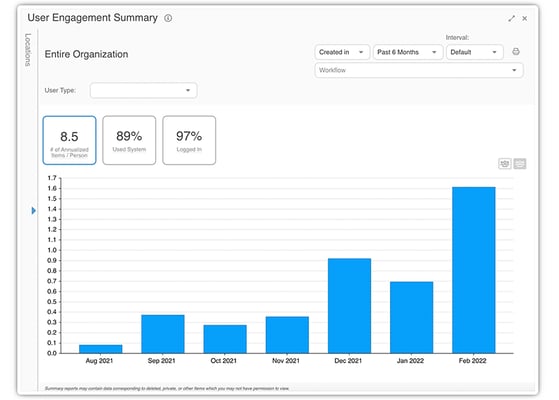 Hoshin Kanri, also known as policy deployment, is the Lean management approach for aligning strategy, tactics, and improvement work organization-wide. The words Hoshin Kanri mean "management compass." When well executed, the method ensures that every employee from the front-line to top leadership understands the organization's most important objectives and works to achieve them by tackling major priorities and daily improvement projects. The Hoshin Kanri technique helps everyone remain focused on the long-term breakthrough objectives while still reaching annual goals and tactically addressing the organization's daily needs.
Hoshin Kanri, also known as policy deployment, is the Lean management approach for aligning strategy, tactics, and improvement work organization-wide. The words Hoshin Kanri mean "management compass." When well executed, the method ensures that every employee from the front-line to top leadership understands the organization's most important objectives and works to achieve them by tackling major priorities and daily improvement projects. The Hoshin Kanri technique helps everyone remain focused on the long-term breakthrough objectives while still reaching annual goals and tactically addressing the organization's daily needs.
The keys to the success of Hoshin Kanri are communication and structure. Managing strategic objectives, annual goals, and daily improvement work is a significant challenge, especially because many people will be involved in the effort. In the past, organizations have used tools like complex spreadsheets, email threads, file sharing applications, and even physical boards to track and manage the technique. Still, these systems are passive and usually fail to provide the support necessary for sustained progress.
Modern organizations have the option to leverage purpose-built software tools to support and amplify their success.
Crucial Advantages of a Policy Deployment Platform
Strategic Performance Management
Most business leaders have many tools for accessing the organization's financial performance and are quite adept at doing so. A much more difficult challenge is understanding the organization's performance related to the strategic objectives identified during the Hoshin planning process. Hoshin Kanri software helps provide insight into progress toward long-term and annual goals. It highlights employee engagement and measures the impact of improvement work at every level. Visual tools enhance real-time management of the Hoshin plan.
Structured Alignment
A driving principle of Hoshin policy deployment is that the organization must be aligned around the long-term and annual objectives. Achieving alignment requires clear and consistent communication and a mechanism for ensuring that each improvement project is associated with a specific target. Software designed for this purpose makes it easy to assign and communicate objectives to each team member. The best solutions allow leaders to create customized lists of strategic goals, categories, and priorities.
Collected Wisdom
One of the most valuable assets of every organization is the tribal knowledge that is built through the process of trial and error. Unfortunately, that hard-earned wisdom is lost when people leave the organization or change roles if it isn't captured in a software platform. Hoshin Kanri software supports documenting each attempt to move closer to strategic and annual goals. Thus, the organization gets smarter with every improvement project it undertakes, and that wisdom is retained even when the players come and go.
Well-Defined Priorities
The Hoshin Kanri (policy deployment) process means carefully balancing tactical and strategic needs. Sort of like driving a car, you must be able to make adjustments based on current conditions and unexpected obstacles, yet you still need to get where you are trying to go. Therefore, priorities often shift. Hoshin software streamlines communication of current priorities and makes it easy for all employees to know how their effort should be spent.
Widespread Access to Strategic Planning
Another principle of Hoshin Kanir is that every employee must be engaged in achieving long-term and annual goals. This requires that everyone from the C-suite to the front line have access to the platform that is used to move the organization closer to "true north." Ideally, the solution will allow workers to access planning tools from anywhere at any time.
The X-Matrix
The Hoshin planning X-matrix is a structured visualization of the organization's objectives, measurements, targets, performance indicators, and action items. The structure of the chart makes it easy to understand the relationships between long-term and short-term goals, as well as to define ownership and support cross-functional collaboration.
/X-Matrix/X-Matrix.png?width=400&name=X-Matrix.png) The "X" is made of four quadrants:
The "X" is made of four quadrants:
Breakthrough Objectives (Bottom Quadrant) - The bottom section of the matrix houses the strategic goals targeted to be accomplished in the next three to five years. The number of goals is usually limited to three to five that are essential to the organization's future direction.
Annual Objectives (Left Quadrant) – On the left, you'll find the yearly objectives necessary to get to the breakthrough goals. Because the grid structure of the matrix makes it possible to visualize the relationship between each annual target and the strategic goal it supports.
Annual Improvement Opportunities (Top Quadrant) – The top section introduces tactical improvement opportunities tied to an annual objective. Here, action items and the strategy are aligned.
Metrics to Measure and Targets to Improve (Right Quadrant) – The right section houses the crucial performance indicators that give leaders insight into how well the organization is moving toward the short and long-term objectives.
Teams and Ownership (Far Right Side) - The far-right side of the Hoshin X-matrix puts a name to each metric, improvement project, and objective.
When the X-matrix is managed as part of the policy deployment and continuous improvement platform, it is accessible to everyone who needs it. This approach helps keep it top-of-mind. Users can drill down into the details of any goal or improvement project from the matrix itself. The results of improvement work are tracked and calculated in the system, so measuring the movement toward goals is painless. Users can place the matrix on visual management dashboards, so they see it every day.
The best practice is to review the X-matrix monthly to ensure it is up-to-date and responsive to changing conditions. The review allows leaders to access progress, remove blockers, and provide coaching where needed. Then, during an annual review, the team checks off the completed goals and prepares for the following year.
Other Hoshin Kanri Software Capabilities
While the X-matrix is the tool most closely associated with Hoshin strategic planning, a policy deployment platform has other capabilities.
Activity and Engagement Reports
Visual management of strategic goals is essential, but knowing who is active and engaged in achieving those objectives is also critical. Monitoring and reporting on this engagement help make it more likely that team members will expend discretionary effort to further long-term and annual goals.

Active Alerts and Notifications
Policy deployment software alerts team members and managers when tasks are assigned, due dates are missed, or opportunities for improvement are waiting to be assigned. Proactive notifications increase the odds of success and boost the momentum of improvement work.
Configurable Project Management
Every organization is unique, so you'll want a strategy deployment platform that makes it easy to configure the system in the best way for your specific use case. In addition, when the system is well aligned with your team's habits and culture, it is more likely to be adopted and become part of how things operate daily.
Opportunity Capture
While some opportunities for improvement will be identified during the Hoshin planning process, conditions change, and new challenges always arise. With a platform for strategic management, employees can suggest opportunities for improvement whenever they find them. Ideally, the solution has mobile apps so that great ideas are never lost because the employee doesn't have a computer handy.

Hoshin Kanri software is the best way to track and manage policy deployment. It brings the plan to life, makes it actionable, and helps leaders monitor progress daily. Our team would love to chat about how it might positively impact your organization.
![[Watch Now] Cascading Strategy Through Hoshin Kanri](https://no-cache.hubspot.com/cta/default/326641/dd5ad176-fb74-4e1e-bf28-ff4d966d1701.png)


Add a Comment